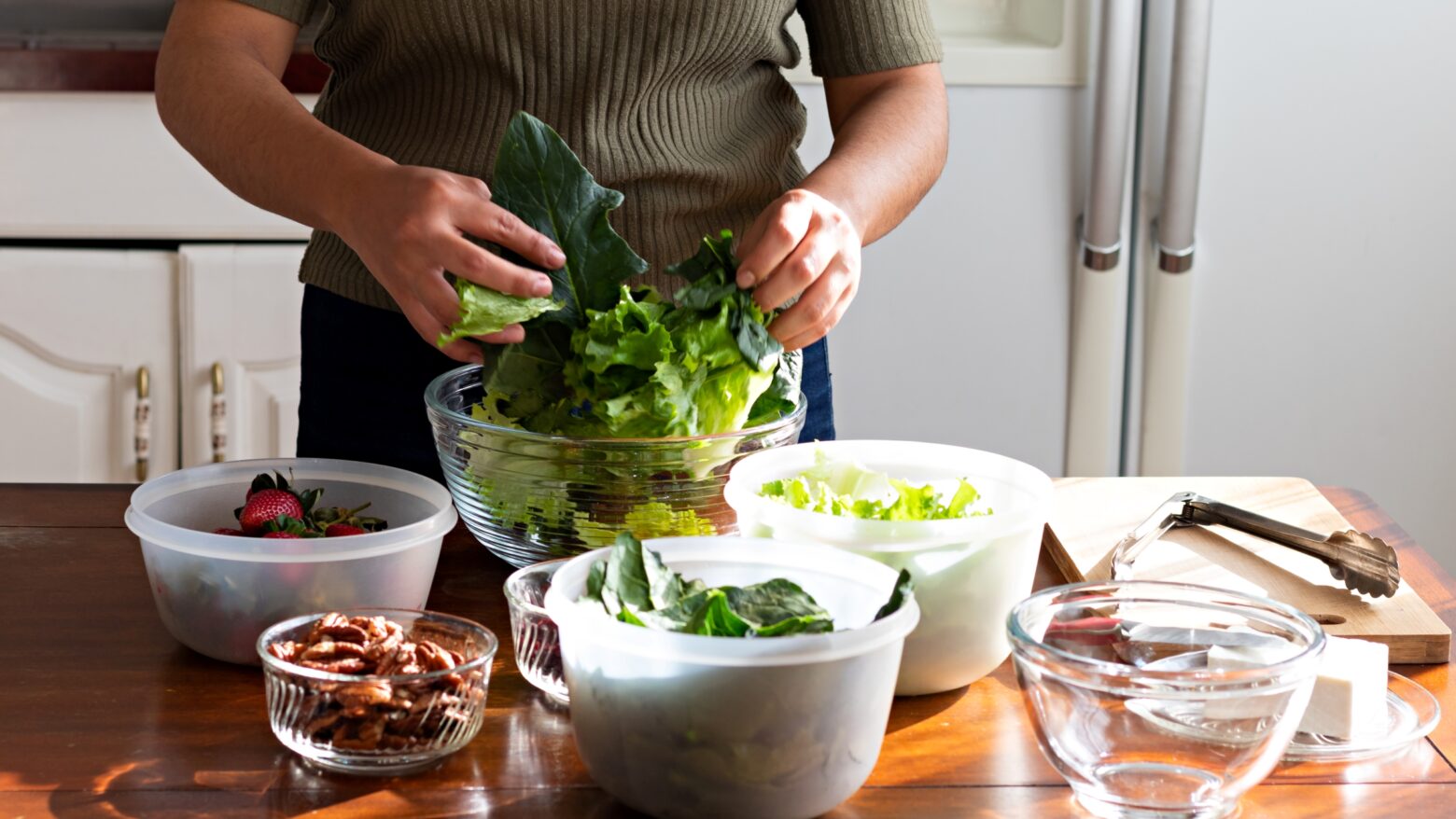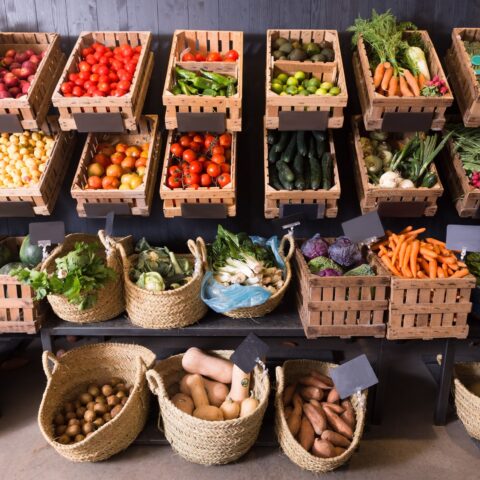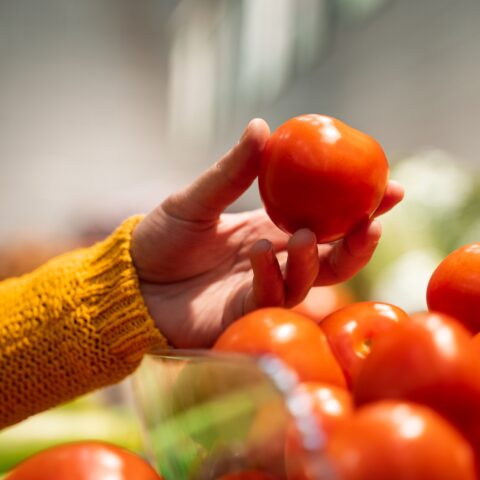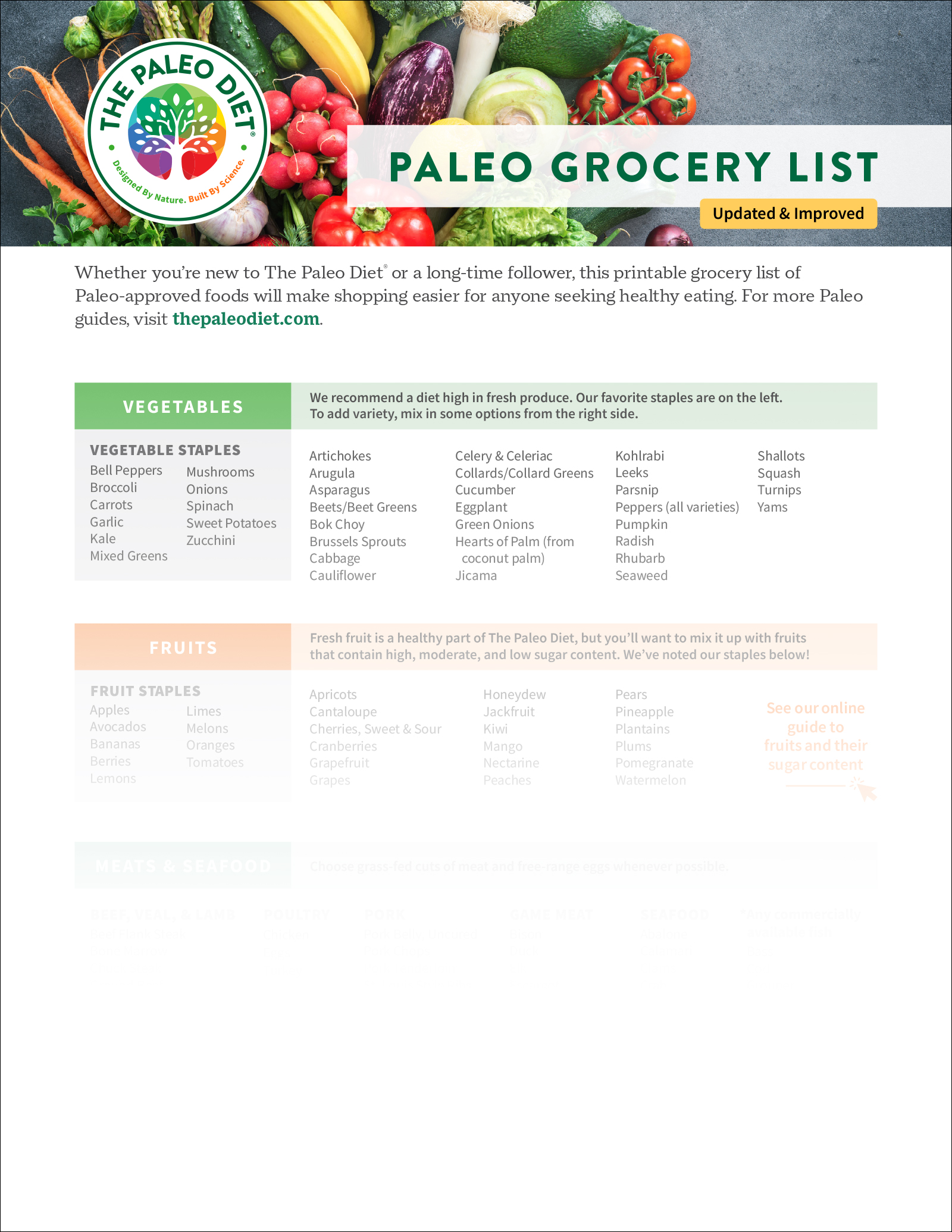In Uncertain Times, Here’s How to Eat Healthy on a Budget

Rising grocery costs, shifting health systems, and unpredictable schedules place pressure on both households and meals. Stress shows up not only in daily routines but in the kitchen itself, shaping the way people plan, shop, and eat. That pressure changes the body’s relationship with food, influencing what feels appealing and what ends up on the table.
How Stress Shapes Eating Patterns
When stress climbs, cortisol rises with it, boosting appetite and sharpening cravings for calorie-dense foods. At the same time, the brain’s reward system becomes more responsive to meals that combine sugar, salt, and fat.¹ That’s why fast food and packaged snacks often feel especially appealing on hard days—they align with what the body is primed to want under stress.
When money or time feel tight, what foods catch your attention first—the ones that are cheapest, quickest to grab, or most familiar? In stressful moments, those are the choices that feel easiest to make, which is why they so often end up in the cart or on the table.
Budget-Friendly Tips & Affordable Foods That Still Nourish
Keeping protein and fiber-rich options nearby—like hard-boiled eggs, no-salt added canned tuna, roasted sweet potatoes, or frozen broccoli without sauces—helps stabilize blood sugar and satiety during stressful periods, making it easier to avoid impulsive grabs. But there are other everyday shortcuts and swaps you can make with your regular groceries that still deliver nutrition. Most of these small shifts don’t require specialty shopping. They simply keep the focus on foods that nourish and satisfy without draining your grocery budget.
Read Labels Wisely
When grabbing food off the shelf, many zero in on one or two details before purchasing—like the front of the package, the price tag, or the ingredient list. Each tells a different story, and together they shape both health and budget.
RELATED: Health Literacy for a Strong and Healthy Life
Research shows these details matters. In one controlled trial, people who ate ultra-processed meals consumed more calories and gained weight, even though the meals were matched for nutrients compared to whole-food meals.2 The way foods are processed changes how filling they are, how quickly we eat them, and how long they sustain us.
Quick label checks can keep more nutrition in your cart for every dollar you spend. Ask yourself if the ingredient list is longer than the food itself. For example, when selecting nut butters, just go for nuts and salt. Extra oils and sugars often raise the price while lowering value.
Buy Frozen and Canned Foods
Consistently eating vegetables, fruits, quality proteins, and healthy fats supplies micronutrients that keep energy steady, support immune defenses, and aid recovery during stressful times. Keeping shelf-stable options on hand makes it easier to pull together balanced meals when time or money is tight.
- Plain bags of frozen cauliflower rice, spinach, or berries stretch meals and reduce waste.
- Canned salmon, tuna, or mackerel in water or olive oil provide protein and healthy fats.
- Choose versions without sauces, syrups, or heavy brines for best value and nutrition.
Make Affordable Protein Swaps
Protein is often the biggest line item in the budget, but a few smart swaps keep meals nourishing without adding cost.
- Budget-friendly proteins: Eggs, ground turkey, whole chicken, canned fish, and organ meats deliver satiety and nutrients without high price tags.
- Cook once, eat twice: roast a tray of root vegetables or a large pork shoulder so the next day’s meals come together quickly.
- One-pot meals—like turkey chili with peppers and zucchini, or chicken and cabbage soup—stretch across several dinners.
- Small swaps make a difference. Replacing breaded chicken nuggets with roasted drumsticks, or trading a packaged bar for an apple with almond butter, saves money and supports satiety.
Use Flavor Builders
Simple, inexpensive seasonings keep meals interesting while supporting nutrient density. For example, our Chicken & Cucumber Salad uses a simple lemon dressing, parsley, onion, and black pepper to provide flavor while leaving out expensive ingredients.
- Garlic, onions, dried oregano, cumin, and no sugar-added salsa bring variety without bottled sauces.
- Fresh lemon, vinegar, or a spoonful of tahini dressing can create flavor without driving up grocery costs.
Everyday Examples of Eating Healthy on a Budget
Don’t leave it until you’re stressed or on a low-capacity day to come up with budget-friendly meal ideas. Familiar meals like the ones below provide a steady supply of vitamins, minerals, and antioxidants your body relies on. When made ready in advance, they make healthy eating possible even when time, money, and energy are stretched.
- Quick breakfast: A fast hash of sautéed cabbage and carrots with ground turkey.
- Workday lunch: Tuna salad wrapped in romaine leaves with a side of roasted beets.
- Snack on the go: Apple slices with almond butter or celery sticks with tahini dip.
- Family dinner: Whole roasted chicken with onions and carrots (use the leftovers for soup the next night).
- Post-workout recovery: A can of sardines with cucumber slices and lemon.
Community Resources Can Stretch Food Dollars
Budgets stretch further when households share access to food. Many communities already have low-cost or no-cost options that make fresh ingredients easier to bring home.
- CSA boxes: $15–$20 can bring home a weekly mix of seasonal vegetables—enough to cover sides for several dinners.
- Co-ops and farm shares: Buying bulk apples or sweet potatoes with neighbors lowers the price per pound.
- Produce swaps: Trading extra zucchini for a neighbor’s tomatoes keeps variety on the table without extra spending.
- Food assistance programs: SNAP benefits and local food banks often provide eggs, produce, and pantry basics that keep meals balanced and affordable.
Ask when produce arrives at your food bank for the best selection or check if your CSA or local grocer offers a discounts for “ugly produce.” These small steps help stretch every grocery dollar while keeping fresh food circulating locally.
Practical Choices Make for a Bigger Impact
Healthy eating is flexible enough to shift with real life. Some weeks it’s canned fish with greens, other times it’s a pot of soup stretched into three dinners, or a familiar meal repeated until the week is over. In every version, food remains a source of stability: small, steady choices that protect health and make the next day easier to face.
Those everyday choices are also where food companies can make the most impact. Products built on whole ingredients and clear labels meet immediate demand and strengthen trust that lasts beyond a single purchase. A frozen vegetable mix without sauces, a protein-forward meal built from basic foods, or a shelf-stable dressing made with olive oil and herbs are small changes that matter in everyday kitchens.
The science points the same way: diets high in ultra-processed foods are linked with poorer health outcomes.3 Investing in products closer to whole foods that are simple, affordable, easy to use is good for households and for the long-term credibility of the food system.
This article is for educational purposes only. It is not a substitute for medical advice or up-to-date public resources. Consult your healthcare professional or local community services office for individualized guidance.
References
- National Institute on Aging. (2022, April 7). Overcoming roadblocks to healthy eating. https://www.nia.nih.gov/health/healthy-eating-nutrition-and-diet/overcoming-roadblocks-healthy-eating
- Hall, K. D., Ayuketah, A., Brychta, R., Cai, H., Cassimatis, T., Chen, K. Y., Chung, S. T., Costa, E., Courville, A., Darcey, V., Fletcher, L. A., Forde, C. G., Gharib, A. M., Guo, J., Howard, R., Joseph, P. V., McGehee, S., Ouwerkerk, R., Raisinger, K., … Zhou, M. (2019). Ultra-processed diets cause excess calorie intake and weight gain: An inpatient randomized controlled trial of AD Libitum Food Intake. Cell Metabolism, 30(1). https://doi.org/10.1016/j.cmet.2019.05.008
- Lane, M. M., Gamage, E., Du, S., Ashtree, D. N., McGuinness, A. J., Gauci, S., Baker, P., Lawrence, M., Rebholz, C. M., Srour, B., Touvier, M., Jacka, F. N., O’Neil, A., Segasby, T., & Marx, W. (2024). Ultra-processed food exposure and adverse health outcomes: umbrella review of epidemiological meta-analyses. BMJ (Clinical research ed.), 384, e077310. https://doi.org/10.1136/bmj-2023-077310
Griffin McMath, ND
With a background in clinical practice, advocacy, and behavior change communication, Dr. McMath is passionate about advancing health literacy and empowering people to make informed decisions.
More About The Author




